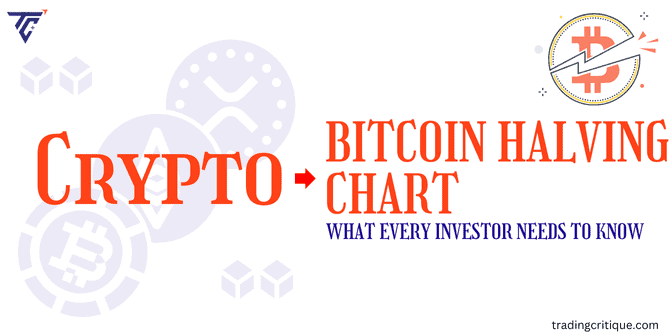Bitcoin halving is a event that happens roughly every four years in the Bitcoin network. When this event occurs, the reward that Bitcoin miners receive for adding new transactions (or “blocks”) to the Bitcoin blockchain is cut in half.
This means fewer new Bitcoins are created, which makes the existing Bitcoins more scarce. In this article, let’s see what to expect after Bitcoin halving and how long Bitcoin halving will last.
Quick Insights
How does Bitcoin halving work?
Bitcoin transactions are verified by a group called ‘miners’ using a process known as mining. These miners solve difficult math problems to add a new batch of transactions (called a ‘block’) to the Bitcoin network.
For their work, they earn a reward, which is currently 3.125 BTC, valued at around $65,207.50 as of May 2024. To keep Bitcoin running smoothly, miners continuously add new blocks of transactions, roughly every 10 minutes.
However, their reward for this work is cut in half every four years or so, after 210,000 blocks have been added. This reduction in rewards can lead to significant changes in Bitcoin’s price, often making it more volatile during those times. At the same time, check how safe Bitcoin is.
Why does Bitcoin halving matter?
Bitcoin halving is designed to control the supply of Bitcoin, keeping it limited and scarce. This process is built into Bitcoin’s design to ensure that the total number of Bitcoins will never exceed 21 million.
Bitcoin halving dates, events, and mining rewards
The below table shows Bitcoin halving events, dates, block numbers, block rewards, and mining rewards history.
| Bitcoin halving events | Date | Block Number | Block Reward (BTC) | Total New Bitcoins Created Between Events | Mining Reward Change |
| Bitcoin Launch | January 3, 2009 | 0 (Genesis Block) | 50.00 | 10,500,000 BTC | Initial reward of 50 BTC |
| First Halving | November 28, 2012 | 210,000 | 25.00 | 5,250,000 BTC | Reward reduced from 50 to 25 BTC |
| Second Halving | July 9, 2016 | 420,000 | 12.50 | 2,625,000 BTC | Reward reduced from 25 to 12.5 BTC |
| Third Halving | May 11, 2020 | 630,000 | 6.25 | 1,312,500 BTC | Reward reduced from 12.5 to 6.25 BTC |
| Fourth Halving | April 2024 | 740,000 | 3.125 | 656,250 BTC | Reward reduced from 6.25 to 3.125 BTC |
| Fifth Halving | Expected 2028 | 850,000 | 1.5625 | 328,125 BTC | Reward will be reduced from 3.125 to 1.5625 BTC |
How does halving impact Bitcoin’s price?
Bitcoin halving is an event that occurs approximately every four years, reducing the reward miners get for validating transactions and adding new blocks to the blockchain. This process makes new Bitcoin scarcer, which can impact its price.
- Halving reduces supply: When the reward for mining Bitcoin is halved, the rate at which new Bitcoins are introduced into the market drops. This decreased supply can make Bitcoin more valuable if demand stays the same or increases.
- Increased demand: Historically, the reduction in new Bitcoin supply has led to increased interest and investment in Bitcoin. This rising demand can push the price up.
- Market sentiment: Halvings often generate excitement and optimism among investors, which can lead to price increases. However, as Bitcoin has matured, the size of these price increases has generally become smaller over time.
- Impact on miners: Miners receive fewer Bitcoins as a reward, which can affect their profitability. Smaller miners may struggle, leading to a consolidation where larger miners with more resources benefit.
- What next when the last Bitcoin halving happens? In the future, when all 21 million Bitcoins have been mined in 2140, miners will rely solely on transaction fees rather than block rewards. This shift will happen gradually as more halvings occur.
How miners are adapting to Bitcoin halving
Here are the strategies used by miners to help them adjust to the changes brought by halving events, aiming for continued success and growth in the industry.
- Upgrading hardware: Miners are using advanced ASIC (Application-Specific Integrated Circuit) machines. These are faster and use less power, making mining more efficient. They’re choosing places with cheaper electricity and renewable energy to cut costs and increase their profits.
- Greener energy: Miners are switching to renewable energy sources like solar or wind power to reduce their environmental impact and lower energy costs.
- Exploring other options: Besides mining, they’re looking into other ways to earn money, such as decentralized finance (DeFi) platforms or staking.
- Managing risk: Miners use options trading and hedging to protect themselves from price swings. They also keep cash reserves and carefully time their Bitcoin sales to maximize profits.
- Working together: Miners are teaming up with others in the industry to share resources and reduce costs. They’re also partnering with hardware makers, energy providers, and financial institutions to advance technology and secure funding.
What to know as a Bitcoin investor
Here’s a simple step on what to know and how to prepare as a Bitcoin investor for a halving event:
- Stay informed: Know when the next halving is expected and watch how Bitcoin’s price has moved in previous halvings. Also, keep an eye on market trends, investor sentiment, and economic factors that might influence Bitcoin’s price.
- Spread your investments: Don’t put all your money into Bitcoin. Diversify your investments across different assets to reduce risk. While a halving can lead to price increases, there’s no certainty, and diversification helps protect your investments.
- Think long-term: Bitcoin can be very volatile in the short term. So many investors buy and hold Bitcoin leading up to a halving, hoping that the price will rise enough afterward to make a profit. They believe that even though prices can fluctuate, the long-term trend will be positive.
- Uncertainty: Despite past trends, there’s no guarantee that prices will rise after a halving. Various factors, beyond just the halving, influence Bitcoin’s price. So, predicting exact price changes is risky and uncertain.
- Set goals and limits: Decide how much risk you’re comfortable with and set clear investment goals. Use tools like stop-loss orders to limit potential losses and only invest money you can afford to lose, as the crypto market can be unpredictable.
Read more: Quick ways to deposit bitcoin into bank account
Conclusion
Bitcoin halving occurs roughly every four years and cuts the reward for mining Bitcoin in half. This reduces the supply of new Bitcoin, often leading to price increases due to the reduced availability and increased investor interest.
Miners typically respond by upgrading technology and looking for cost-effective methods. Investors should stay informed and be prepared for potential volatility. The final Bitcoin halving is projected to occur around 2140, after which transaction fees will become more significant.
Pro Tip
Stay updated on the latest Bitcoin trends and halving insights by subscribing to our trusted forex brokers. And check out information on forex, CFDs, cryptocurrencies, and trading. We welcome your thoughts—please share your feedback in the comments below!







